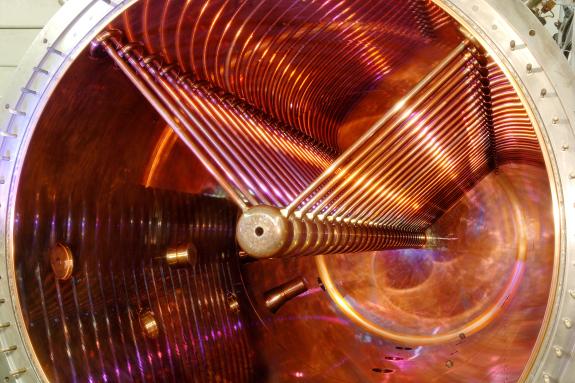Fast charged particles have a wide range of applications. Scientists want to use them to gain a precise understanding of the structure of matter - elementary particles, nuclei, atoms and molecules - through to the creation of our universe and its development since the Big Bang. They also make the world of antimatter accessible so that it can be investigated whether our world would still hold together if matter were simply replaced by its antimatter. Fast charged particles are also used in medicine, for example in tumor therapy.
But what do you have to do to make the particles so fast? The accelerator facilities required for this are huge. The Large Hadron Collider (LHC), for example, has a circumference of 27 km. What's more, everything happens incredibly quickly and the ions can only be seen as a line on a measuring device. With us, young and old thirsty for knowledge can try to generate fast particles using simple models. We have also prepared a few unknown "atoms" whose shape can still be examined by visitors.
Fast charged particles surround us every day. Some of them come from outer space, which is why they are also called cosmic rays - they cause the aurora borealis, among other things. Another part comes from the earth's crust, where radioactive decay has been occurring for billions of years. These particles are part of the background radiation and are harmless to humans. We will make these particles visible in a special cloud chamber. Charged particles were already detected in this way in the early years of the last century. In 1932, the positron was the first anti-particle to be observed with the help of such a cloud chamber.

